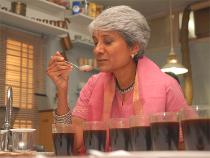
Bengaluru :
Sunalini Menon remembers the first Cafe Coffee Day (CCD) outlet VG Siddhartha started on Brigade Road in 1996. She had just ended a two decade-long stint at Coffee Board and was making brews for CCD under her independent consultancy Coffeelab.
Siddhartha, Menon reminisces, took advantage of the IT boom to make an offer: buy one cup of coffee and surf the net for one hour.
“We served filter coffee on the ground floor and espresso on the mezzanine floor. People warmed up to only cappucino and lambasted us for charging exorbitant rates for a cup of brew.“
In stark contrast, the three-day Coffee Santhe last weekend saw a footfall of 4,000 people. “We have come a long way since,“ Menon, Asia’s first woman coffee taster, points out.
It is experiences and journeys like these that Menon plans to document in a museum dedi cated to coffee. That’s her dream project and a final ode to her love for coffee.The project, which has been in the pipeline for some time now, is taking shape.
“We are forming a trust since it is a non-profit initiative. It requires two acres of land as we plan to grow coffee around it. We have decided on Devanahalli, though there is an offer for it to come up in Chikmagalur,“ she said, explaining that budgets have to worked on accordingly . Menon favours a location closer to the airport as “travellers with a transit visa can see the museum, have a cup of coffee and fly back with happy memories of India.“
Menon, 64, has the blueprint ready .“We will start with the story of Baba Budan (who brought coffee to South India) and traverse to the cultural aspects of coffee, diversified cultivation patterns and types of seed material.We are planning a layout that is representative of a typical Indian coffee plantation.“
The exhibits will include antique coffee roasters, grinders, brewing equipment, mugs, cups and coffee powders from different corners of the world. The Coffeelabs office in RMV Extension, a mini-museum in itself, houses memorabilia including tribal products from coffee-growing areas, arecanut pickers, ancient milk measurement units and coffee pots.
“Each equipment throws light on the culture of the country it comes from,“ Menon explains. For instance, Italian pots have ornate carvings; the ones in Iran are known for their silver and filigree; Pakistan has a recurring crescent moon pattern while Egypt sports designs of Cleopatra.
Education consultant and coffee addict Shaista Baljee believes that a museum will find takers not only among aficionados like herself but others.“India, especially Karnataka, has such a fantastic coffee culture that has developed phenomenally over the years. An initiative like this in a tea-drinking country will be amazing.“
source: http://www.economictimes.indiatimes.com / The Economic Times / ET Home> Magazines> Panache / by Divya Shekhar, ET Bureau / December 07th, 2016

